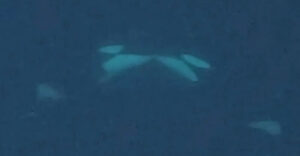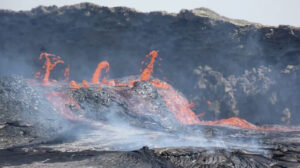Elks are too smart for their own good: Elk in Utah are moving off public land into protected areas during hunting season, then returning when it ends. “It’s almost like they’re thinking, ‘Oh, all these trucks are coming, it’s opening day, better move,’” said Brock McMillan, lead author of the new study. He found that the number of elk on public land dropped by a staggering 30% at that time.
This clever behavior has caused issues for landowners, because these large elk populations are wrecking habitat, disrupting farming, and eating food meant for livestock. Meanwhile, hunters are complaining about the lack of elk.
Seasonal hunting keeps the elk population at a manageable size, but this new survival strategy has significantly increased elk numbers. This is not sustainable long-term. Hunters can now apply for further permits to hunt on private land, as long as the landowners agree.
Early humans
The largest human family tree ever created: Scientists have created the largest-ever family tree. It attempts to show how humans today link to each other and to our ancestors. Geneticists studied genome sequences from modern and ancient humans across 215 populations. Computers then showed distinct patterns of genetic variation.
The final map contains almost 27 million ancestors. “We definitely see overwhelming evidence of the out-of-Africa event,” said researcher Anthony Wilder Wohns.
The ancient genomes also revealed when different mutations first appeared and how they spread.
Ancient African DNA revels surprises about early humans: Researchers have found the earliest known human DNA from Africa. They studied the remains of six individuals buried in Malawi, Tanzania, and Zambia between 18,000 and 5,000 years ago. They also reanalyzed published data on 28 other individuals in the ancient sites. The research showed major demographic shifts that took place 20,000 to 80,000 years ago. As far back as 50,000 years ago, people migrated within Africa to trade, share information, and find partners.
Drones in science

Vanilla flying over sea ice off Alaska’s North Slope. Photo: Platform Aerospace
NASA is flying drones in the Arctic: Scientists have struggled to use drones in the Arctic. The extreme environment — cold weather, wind, vast open spaces — has meant that they can’t fly for very long. But NASA has now developed a fixed-winged drone named Vanilla that can remain airborne over the Arctic for several days at a time.
Among other things, it uses radar to measure snow depth on top of the sea ice. Eventually, the drone may also assess how freshwater melt from Greenland and Antarctica is contributing to sea-level rise.
In 2021, Vanilla earned the world record for the longest continuous flight for a remotely piloted aircraft without refueling — eight days. Though this was in a temperate climate, its builders hope that Vanilla will fly for five days over the Arctic.

Bottlenose dolphin and calf. Photo: Shutterstock
Drones reveal whether dolphins are pregnant: Scientists can now use drones to detect pregnant dolphins by measuring the body width of females. A particular pod of dolphins in northern Scotland has been studied for 30 years. Until now, researchers could only tell a successful pregnancy when a calf appeared. “Using aerial photos will allow us to routinely monitor changes in reproductive success,” said Barbara Cheney of the University of Aberdeen.
History’s largest flyers
New species of Pterosaur uncovered in Scotland: A Ph.D. student in Scotland has discovered a new species of Jurassic pterosaur. Pterosaurs were the first vertebrates to fly and were among the largest flying animals in the earth’s history.
The remains are the largest ever found. It is also the best-preserved pterosaur ever unearthed in Scotland. “Its sharp, fish-snatching teeth still retain a shiny enamel cover, as if it were alive mere weeks ago,” said paleontologist Steve Brusatte. The 170-million-year-old species belongs to a group of early pterosaurs known as Rhamphorhynchidae. The reptile’s skull reveals large optic lobes, suggesting that pterosaurs had excellent eyesight.






